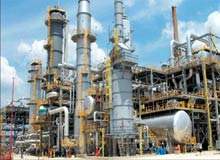
ExxonMobil completed the expansion and upgrade of the refinery and desulphurisation plant at Port Jérôme, Gravenchon, France in the third quarter of 2004. The work had to be completed by this time because of the new European legislation relating to the levels of sulphur in fuels.
The $200m contract was undertaken by the French subsidiary of Foster Wheeler Ltd for all of the Front-End Engineering and Design (FEED) work at the PJ21 refinery. Design work began in November 2001. The EPC (Engineering, Procurement and Construction) contract was awarded in October 2002 to Foster Wheeler France SA.
Efforts to reduce the air pollution levels from the automotive industry have centred around the reduction of sulphur levels, from 1,500ppm (parts per million) for some refiners, to below 10ppm by 2008 in Europe and 30ppm by 2006 in the US and Canada.
ExxonMobil have developed SCANfining (Selective Cat Naphtha hydrofining) and OCTgain technologies to maximise the desulphurisation process. It is these technologies which were fitted to the Port Jérôme facility.
PORT JÉRÔME REFINERY EXPANSION
The adjoining refineries of Port Jérôme and Gravenchon were integrated in 2000 to increase the efficiency of fuel, lube and chemicals refining. The adjacent refineries have been combined into a highly efficient single site, with 18 new major pipeline connections, control-room consolidations, and support infrastructure integration.
The larger facility is able to produce 230,000bpd of crude and 17,000bpd of lubricant. In April 2001, Exxon-Mobil bought the adjacent polypropylene plant from Basell to further improve the site.
PJ21 REFINERY PROJECT
The PJ21 refinery project included a Gofiner unit, which is a technology that has been designed by ExxonMobil for desulphurising crude oil and converting heavy fractions into light fractions. The Gofiner unit for catalytic cracking breaks up heavy hydrocarbon molecules into lighter fractions using heat and catalysts. The various fractions can then be used for different things from a light gas to heavy solids, such as bitumen.
The project also involved the upgrading of the existing fluid catalytic unit to increase auto-fuel and propylene production and the expansion of the sulphur recovery units and associated facilities.
These included monoethanomine treatment, which is a chemical ‘scrubber’ for the extraction of acidic gases such as hydrogen sulphide and carbon dioxide from neutral gas streams; a sour water stripper, which is a method of distillation to remove hydrogen sulphide from water; a flare for the controlled burning of combustible waste gases and various other off-site facilities.
SCANFINING AND OCTGAIN
Refiners are most interested in desulphurising cracked naphtha while minimising octane reduction that often occurs with hydrodesulphurisation (HDS) reactions. There are three main processes to do this:
- Intermediate FCC (Fluidised catalytic cracker units) Reforming, which is comparatively low cost and involves catalyst deactivation
- FCC Feed Hydrotreating, although this provides considerable benefits in addition to naphtha desulphurisation, it is extremely expensive
- Gasoline Desulphurisation, which is done through selective and deep hydrodesulphurisation (HDS)
SCANfining is used for selective HDS and has a high number of product olefins with few reductions in octanes. It was developed by ExxonMobil and Akzo Nobel Catalysts to reduce hydrogen consumption over a low temperature and a low-pressure, fixed-bed reactor. When the new Exomer process is added to this, the desulphurisation capability is extended further to 10ppm.
The Exomer process has been developed by ExxonMobil and Merichem to extract all carbon mercaptons from the fuel, and provide catalyst stability. The process does not involve the use of a catalytic naphtha splitter, which reduces the capital and operating costs of the motor gasoline (Mogas) desulphurisation unit.
OCTgain technology is used for deep HDS for low olefin products and has a very high octane value. The technology can be used to vary product octane on a day-to-day basis, while keeping almost 100% desulphurisation.
The SCANfining and OCTgain units at Port Jérôme – Gravenchon began operations in 1999 and by 2004 the new plant will be ready to take over operations.
By 2006 SCANfining had been introduced to over 11 refineries across Europe and in the US and Canada. The technology has proved that a 95% reduction in sulphur levels in hydrocarbon feedstocks is possible at a reasonable cost and while minimising the loss of octane levels.



